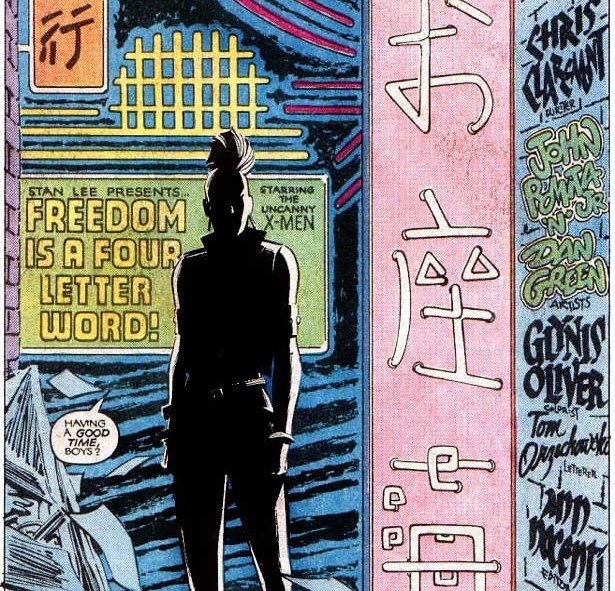One of the more fundamental problems with Wein’s launch of the new X-Men was the paradox of trying to appeal to an international market while still presenting a form of colonialist cultural centralism. Claremont didn’t always escape that, but he made important strides. #xmen 1/11 

GSX 1 begins with Xavier traveling the world to recruit a new batch of X-Men from their homelands, often removing them from existing hero (or goddess) roles for their respective peoples with the promise of an obligation to the world that lands them squarely in upstate NY 2/11 

Once Claremont takes over, some more rational considerations appear, however. In UXM 94, for example, Sunfire leaves the X-Men immediately out of a sense of obligation for his homeland. Fans were confused by this initially, but it’s actually pretty sensible. 3/11 

Indeed, if we apply a decolonization framework to Claremont’s version of the X-Men, we can see some interesting and important elements being added to the usual X-Men mix, including deeper consideration of language, spirituality and culture. 4/11 

Language is iffy, but Claremont does consistently include a small smattering of foreign languages in his X-Men’s dialogue alongside C’s notorious phonetic renderings of accents. Though fodder for jokes, this does at least represent an attempt at acknowledging difference. 5/11 

Culture clash also plays a very consistent role in the minds of the X-Men, with particular emphasis on Storm and Colossus, both of whom routinely reflect (often critically) on the cultural differences of their homelands and the X-Men’s world. 6/11 

Additionally, Claremont lets his international team travel more and, as Grant Morrison notes, UXM used “accurate photo references and up-to-date travelogue descriptions of the exotic locales that the X-Men would visit in the course of each new headlong adventure.” 7/11 

Eventually, C even relocated the team to a foreign country, thus making their dream and vision more clearly international. Again, however, the results were mixed due to Claremont’s representation of Australia falling back on broad stereotypes. 8/11 

Importantly, C also cultivated his X-Men (who were created around nationalist or ethnic "types" in a manner that speaks to Barthes’ "Mythologies") into multi-faceted characters, incorporating attributes and desires that did not conform to national or ethnic types. 9/11 

Storm’s return to Kenya in Lifedeath II draws concepts of diaspora and repatriation into the narrative quite directly, though the results are again imperfect, as noted by scholar Osvaldo Oyola. themiddlespaces.com/2015/07/14/imp…
So much of the approach to colonialism in the run is imperfect, but C’s efforts stand above and beyond his contemporaries in a great many regards, complicating and cultivating an initial type-based configuration that was much more condescending in its origins. 11/11 

• • •
Missing some Tweet in this thread? You can try to
force a refresh






















